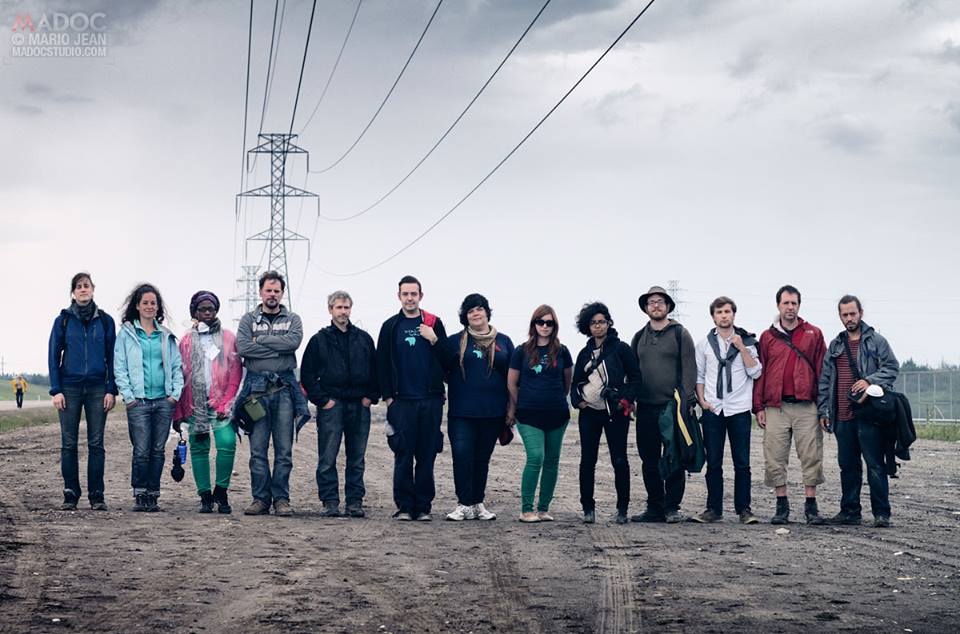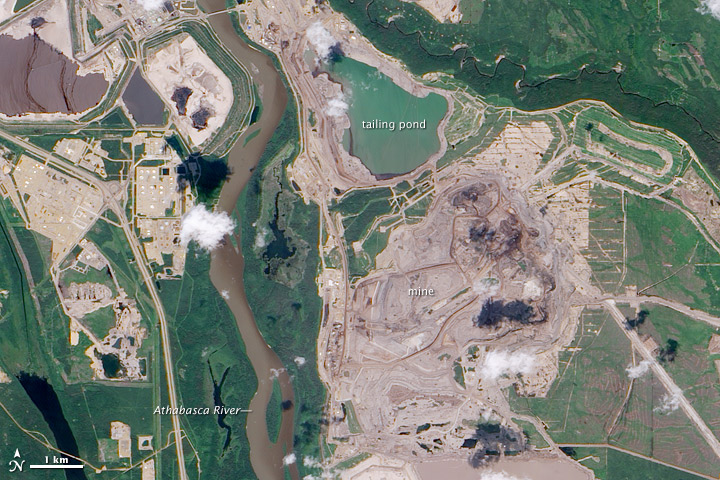FSC at the 2013 Tar Sands Healing Walk
Back in January Eriel Deranger asked a room of over 300 people from across the country gathered in Ottawa for the 1st Assembly of the Peoples’ Social Forum: “By show of hands, how many here have heard of tar sands?”. All present raised their hands. “Now” she continued, “how many here have actually seen tar sands?”. This time, the room stood still.
For the past 4 years now, the Keepers of the Athabasca, a collective of First Nations, Metis, Inuit, environmental groups, and watershed citizens have organized an annual 14km Tar Sands Healing Walk in Fort McMurray. Unique in its kinds, this walks brings you at the heart of one if the largest energy project on the planet. Alberta is the third-largest proven crude oil reserve in the world. The Healing Walk is lead by local elders who pray for the healing of the land and “to bring attention to the destructive impacts of tar sands”. This year, FSC staff member Nydia Dauphin was there as part of a Québec delegation.

Photo credit: Mario Jean
The site, colloquially named “Mordor”, is surreal. Within the first kilometers of this walk, you are obliged to attest how eerily well the scenery fits Tolkien’s hellish description. More chilling still is the fact that the devastation we witnessed is the result of the exploitation of only 3% of the total reserve of oil sands. The impacts of the full exploitation are incommensurable.
Mining operations in the Athabasca oil sands. Image shows the Athabasca River about 600m from the tailings pond. NASA Earth Observatory photo, 2009.
On this walk, every sense is assailed: from the smell of chemicals, to the sound of detonations every couple of seconds to keep migrating birds from meeting their premature death in lethal tailings lake.
Once home to prime hunting and fishing for the Athabasca Watershed inhabitants, the area, in the matter of half a century, has gradually transformed itself into a macabre desert with no remnants of its not so distant pristine past. The First Nation, Métis and surrounding communities directly affected by this industry are no longer able to enjoy their human right to food. For too many communities, safe drinking water is no longer accessible. Air is highly polluted. Fish and venison, cornerstones of traditional livelihoods for some, are becoming scarcer and show signs of illness.

Photo credit: John Ulan, EPIC Photography. More pictures.
As this goes to press, oil spills have been ongoing for at least 8 weeks in the region.
Interconnectedness to our food systems
The struggle to stop the destruction of our environment is intimately tied to our current food systems.
In the past century, this industry has grown increasingly fossil fuels intensive. Here are just a few examples:
-
Entrants derived from nonrenewable fossil fuels: pesticides, fungicides, fertilizers, agrochemicals;
-
Fuel powered machinery in food production and processing;
-
Transportation of food over larger distances;
-
Predominance of large-scale monocultures.
This model is simply unsustainable.
As such, when engaging in environmental activism, we must also keep in mind that shifting away from fossil fuels will necessitate a shift away from our current food system as well. More local, just and sustainable food systems must be supported where present and created where lacking.
On this walk, we met hurt, disbelief and anger. But we also met hope, courage and solidarity. Individuals witnessed the necessity of working collectively in this struggle to bring about change. Furthermore, notions of distance that tend to desensitize us to events not happening in our immediate proximity were shaken. In the end, the social, food and environmental injustices afflicting the Athabasca watershed inhabitants and others around the world affect us all. Let us keep the spirit of the Healing Walk at the heart of the daily actions that we take to restore a nurturing and respectful relationship between humans and Mother Earth.
- Blog de Nydia
- Identifiez-vous pour poster des commentaires



